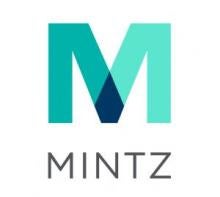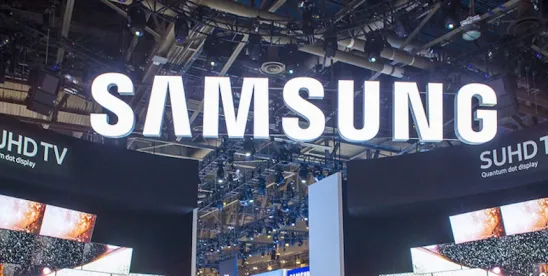In a rare occurrence, the DOJ’s Antitrust Division and USPTO submitted a joint “Statement of Interest of the United States of America” (DOJ Statement) in support of injunctive relief in a district court patent case: Radian Memory Systems v. Samsung, et al., 24-cv-01073-JRG (E.D.TX.). The DOJ’s Statement is a positive step to reframe how courts evaluate irreparable harm for all patent holders, including small-and-medium sized enterprises (SME) and licensing companies. The Statement signals a policy shift towards making injunctive relief easier to obtain and provides insight into how to frame a complaint and motion for preliminary injunction to achieve this goal. Below, we analyze the case background and takeaways, to show how SME and licensing companies may be able to position themselves best for injunctive relief. The DOJ’s Statement may influence how courts nationwide treat injunction requests in patent cases, especially those involving SME with licensing-based business models.
The real threat of injunctive relief is often the most powerful tool in generating licenses or resolving patent cases. The Radian case offers a potential new opportunity to consider for obtaining and enforcing injunctive relief.
I. Injunctive Relief Has Been Elusive, Especially for Non-Practicing Entities
Following the eBay/Winter decisions, in 2006 and 2008 respectively, injunctive relief has become increasingly difficult to obtain in U.S. district courts. The impact has been a rise in ‘calculated’ or efficient’ infringement, where implementers assess the cost of patent infringement (in the form of damages down the road); the likelihood of being forced to pay that cost (based on the risk of litigation and the successful proof of infringement and damages); and the benefit of exploiting technology without paying for it. Based on this cost-benefit analysis, implementers often choose the path of infringement because they can simply pay a judgment or settlement later with some modest impact to their ongoing business. Although the ITC offers powerful injunctive relief—in the form of exclusion orders against infringing imports—it is not always an available forum for patent owners. In district court, the risk of an injunction to an infringer is very low and often fails to discourage calculated infringement, to the detriment of patent holders. This problem has disproportionally impacted SME and licensing entities, who may not exploit their own patents in the form of products or services or lack funds to enforce their patents.
II. A Policy Shift is Needed to Correct Market Dynamics
The market dynamics of calculated or efficient infringement playout routinely, as explained by Radian in its complaint and motion for a preliminary injunction against Samsung. In its complaint, Radian described how its SSD technology was praised by the industry and ultimately incorporated into standard solutions, such as the “NVM Express Zoned Namespaces Command Set Specification,” however, it was “cast out by the industry” when it refused to join the standard setting organization and offer its technology for free. (Complaint at 4-5). Amidst this backdrop, in moving for injunctive relief, Radian highlighted the public policy considerations that weighed in favor of enjoining Samsung. Radian echoed its complaint and reiterated how Samsung (and others) used its invention in standardizing SSD technology, followed by the pressure to join the standard setting organization and offer licenses to its patents for free:
Radian developed and patented its innovative Symphonic Cooperative Flash Management technology to improve flash solid-state drives (“SSDs”), particularly for enterprise and data-center operations. Despite Radian’s best efforts to participate in the market, Samsung and others iced Radian out of the industry. They did so in part by coalescing around key concepts of Radian’s technology, including some of its patented inventions, and incorporating them into standardized specifications. Samsung was a top-tier member of NVM Express (“NVMe”), the organization in which these specifications were developed. It is also the organization that others in the industry tried to pressure Radian to join. Radian refused because NVMe’s policies would have required Radian to give royalty-free licenses to any of its patented technology that was incorporated into the specifications. Now, Samsung markets and sells infringing NVMe SSDs, causing irreparable harm to Radian.
Motion for Preliminary Injunction at 1.
III. Antitrust Concerns and The Need for Injunctions
Homing in on the allegations, in Radian’s complaint and motion for PI, of irreparable harm—and perhaps seeing the opportunity to level the playing field against calculated infringement amid the low likelihood of injunctive relief—the DOJ filed its Statement. Though Radian did not bring an antitrust claim, the DOJ noted that the complaint “nevertheless rais[ed] competition concerns” and stated that many of the arguments made by Radian had reverberations in antitrust law. (Statement at 1, 3-4). In response, the DOJ provided a comprehensive overview of the historic case law to support the availability of, and need for, injunctive relief based on: (1) the inherent difficulty of calculating patent damages and (2) the public policy considerations of disincentivizing calculated infringement, especially against non-practicing entities.
The DOJ’s Statement explains that irreparable harm is often present in patent infringement and asks the court to “consider Radian’s evidence of a likelihood of irreparable harm, including any evidence that monetary damages are difficult to calculate.” (Statement at 16). The DOJ argues that “[i]rreparable harm is common in patent infringement cases because patents are hard to value and damages are difficult to calculate,” which is evidenced by the “large number of reversals based on flawed damages models.” (Statement at 7, 10). The DOJ further explains that SME or licensing entities are no less impacted because “patent owners who rely on licensing as part of their commercialization strategy often desire to control the scope of a license.” (Statement at 9). Without a potential injunction, a patentee loses control of their unique asset, including whether or how its invention is utilized in the marketplace. (Statement at 14). Importantly, the DOJ’s Statement explains that eBay does not need to be overturned; rather injunctive relief can be tailored (in timing and scope) in keeping with eBay and traditional equitable practices. (Statement at 16). Overall, the DOJ’s Statement is a forceful call for the reestablishment of injunctive relief in district courts—not only as a remedy granted in rare circumstances.
Takeaways
While it is yet to be seen if the court credits the DOJ’s Statement in deciding whether to grant Radian a preliminary injunction against Samsung, the intended policy shift is evident and shows what patent holders should highlight in complaints and motions for preliminary injunction. First, patentees should describe the irreparable harm, whether through loss of market opportunity or control in how their invention is utilized. Second, patentees should note the inherent difficulty in calculating damages for patent infringement (while not undermining their ultimate calculations as being too speculative). Third, if standard setting organizations or other third-party market operators are involved, a patentee should consider the antitrust implications or competition concerns and potential claims.
Predicting the likely concern, the DOJ’s Statement should not create public interest policy implications because only strong patents will benefit from its adoption. Obviously, an increased availability of injunctive relief in district courts would be a welcome sea change for patent owners and would return some balance to the patent licensing market. The imbalance is well documented. As but one example, Judge Michel wrote that: “[i]t is no hypoethtical to say that, without an injunction possibility, an infringer such as a massive corporation can run roughshod over small inventors or underfunded NPEs.”[1] Noting the precipitous drop in injunctions obtained by SME and licensing entities following eBay, he wrote:“[t]hese results are untenable in view of the rights expressly granted by the law, the nature of the property rights at issue, and history.”[2] Indeed, a return to pre-eBay injunctive relief would have the potential to combat calculated infringement and provide meaningful leverage in early licensing negotiations. Additionally, the district court could rejoin the ITC as credibly offering patent holders injunctive relief.
[1] Circuit Judge Paul R. Michel (Ret.) and John T. Battaglia, eBay, the Right to Exclude, and the Two Classes of Patent Owners, 2020 Patently-O Law Journal, at 17. (available at: https://patentlyo.com/media/2020/11/Michel.2020.RightToExclude.pdf)
[2] Id. at 16.







 />i
/>i

